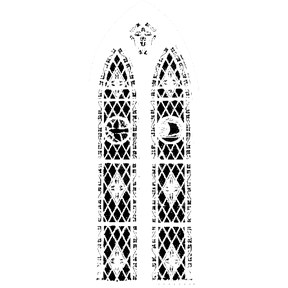Amos 5: 18-24 (New Jerusalem Bible)
Matthew 25: 1-13 (Common English Bible)
The parable in Matthew chapter 25 is a symbol of the Second Coming of Christ. In three weeks we will be celebrating the first Sunday of Advent. Advent should have a duo meaning to us. We often think of the period between Thanksgiving and Christmas as the time to sing Christmas hymns during worship, but what is often forgotten, Advent worship should also be about Christ’s Second Coming. And that is something more mainline Protestant churches need to address.
The symbol in the gospel of the master and bridegroom represent both God and Christ. The delay is a symbol of the present period between Christ’s first coming and Christ’s expected return. In Matthew’s gospel, the end times are portrayed as a wedding banquet prepared by a father for his son. The believers are encouraged to be alert and prepared (Matthew 25:13). Like a bride waiting for the coming of the bridegroom, believers are encouraged to live fully alert for the Second Coming. But many in Matthew’s Jesus Community were growing impatient. It had been nearly 60 years since the resurrection of Jesus and no return yet.
“The Second Coming” is an idea sometimes considered as the exclusive property of the fundamentalist churches. But the idea of the Second Coming of Christ has been part of the Jesus faith from the very beginning.
There are basically three major ideas about the Second Coming. The most popular among Christians of a fundamentalist mindset is Premillennialism, which pictures Jesus as literally reigning in person in Jerusalem for 1,000 years. Premillennialism theology has spawned the ideas of the Tribulation humans will have to go through and the idea of the Rapture which is so misunderstood by the Premillennial crowd. This theology was not developed until the 19th century by John Nelson Darby and has no credence with the early church writers. Believe them and not the authors of “The Left Behind” novels.
The second idea about the Second Coming was called Postmillennialism and it was very popular during the late 19th and early 20th century theology. There was a lot of optimism during that brief span of human history. It had been more than a generation since a major war in Europe or elsewhere. There was a hope by Christian persuasion and example the entire world would be converted to the teachings of Christ.
And when that was done, Christ would return to reign. But a few years later, World War I began and 20 years later World War II began. That ended the optimism of the Postmillennialists. In both devastating wars Christians were killing Christians. Not a good example for potential converts.
The third idea of the Second Coming is called Amillennialism and that theology has been around since the 3rd century AD, predating the other two. Personally, I kind of lean toward Amillennialism. This is generally understood in terms of Christ’s Reign through the Church until the coming of the new earth and heaven. Many Amillennalists believe Christ will return, but in what form is up for debate. I don’t believe it will be the white European version of Christ. It might not be a human form at all. The Christ could return as a brilliant form of Light.
But why is the Second Coming still important for us today? First, because it can make us humble and open and there is something greater than ourselves controlling our destiny. Second, because it can help kindle hope and courage. And third, because it can help cultivate a spirituality of being woke and mindful, keeping awake and watchful for the signs of the times. So the idea of the Second Coming, properly understood, can help us be humble, hopeful, courageous and alert.
As we will see in the coming weeks, this “keeping awake” is central to the upcoming Advent season. Bernard of Clarvaux, the 12th century Abbott and theologian, wrote of three Advents. First was the Incarnation of the Christ into Jesus. The Second or “middle” Advent is the activity of Jesus and his followers to minister to the hungry, the lonely prisoner, the weary refugee and the asylum seeker. And the Third Advent is the end of the present age.
The purpose of the parable is to encourage people toward wise action, following Jesus’ teachings for the joy they bring to people they help. The bridesmaids are poetic symbols, and we should not think of them as wise or foolish people in the real world. Instead, one can think of them as representing the wise and foolish sides of ourselves.
The prophet Amos also had to deal with people who were more foolish than wise. Of all the prophets in the Hebrew Bible, I feel that Amos was the one most touched by the Spirit of Christ. Although his ministry was short, from 760-755 BC, it was very powerful. Amos was from Judah but his message was directed to the Northern Kingdom of Israel. Israel was enjoying a period of relative prosperity. The problem was, it was “trickle-down prosperity.” Only the rich benefitted while the poor suffered. Amos condemns Israel because of its oppression and unfair economic system.
In 1963 during the March on Washington DC for jobs and freedom, the Rev. Martin Luther King Jr. quotes the Prophet Amos. “But let justice flow like water and righteousness like a never-ending stream.” It was 100 years since Lincoln’s Emancipation Speech and still true freedom was absent for most Black Americans in 1963.
Like Rev. King’s speech, Amos's message was also for its immediate audience. While Rev. King spoke in an open area, Amos’ message was repeated in Temples of Jewish worship. Amos warned those who heard him, the Day of Yahweh would be a time of reckoning for those who oppress the poor. It didn’t matter how correct their worship was or the number in their places of worship. God is coming and God is not happy. Amos criticized the Israelites for practicing insincere worship that disconnects civic justice from public worship. Just like many churches in America who only preach hollow outward piety. By contrast, God is calling for increased and sustained attention to world-wide social inequalities. Seeking justice and righteousness should not be limited to occasionally private charity, but instead address the larger problem: why is there so much poverty in a world that has so much?
Amos called the end of his world, the Day of Yahweh or the Day of the Lord. Today we call it the Second Coming, the Apocalypse, Armageddon or Parousia. I like to call it the Great Unknown. I cannot explain the Second Coming no more than I can explain the Resurrection. But I believe that something miraculous happened at that tomb on Easter morning. And something miraculous will happen in the future on what is called the Second Coming. Maybe today. Maybe 50,000 years from today. But expect the unexpected. The First Coming of Christ was not what the Jewish people expected. The Second Coming of Christ could be something totally different from what most Christians think. Will the Christ even be in human form during the Second Coming?
My vision of the Second Coming is when humanity wakes up and the skies will be full of kaleidoscope colors never seen before. And everybody’s hearts will be filled with love. And their minds now have a Christ consciousness, whether you’re Hindu, Muslim, Buddhist, Jewish, Agnostic or Christian. Then there will be true love, peace and justice on earth. Maybe I’m wrong, but we can still “Imagine.”
AMEN


